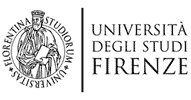Course Presentation
Mathematics is a very ancient discipline, although in constant evolution, which develops its knowledge in an abstract context by means of inductive and deductive methods. Alongside the problems that have been studied for centuries, the needs of nowadays society are more and more frequently posing new problems to Mathematics deriving from Physical, Chemical, Natural, Economic, Social Sciences, Engineering, and Medicine. Furthermore, in all countries of the world, Mathematics contributes to the cultural education of students of all school levels.
The Degree Course in Mathematics provides a solid basic preparation in the various areas of Mathematics, a good command of the scientific method, as well as computer and computational skills. It trains graduates to acquire good abilities of synthesis and abstraction, that are increasingly requested in research institutions, in industry, and in the sector of services with high technological content. The Bachelor’s degree has his natural curricular completion in the corresponding Master’s Degree in Mathematics.
TRAINING OBJECTIVES
The Bachelor’s Degree has as main goal of preparing the students to continue their studies in the Master’s Degree in Mathematics (class LM 40), both in the theoretical field and in the field of modeling or IT applications. In addition, the acquisition of skills that can be immediately employed in the labor market is provided.
At the end of the course, the student will achieve a solid mathematical knowledge as well as the ability to apply the acquired tools.
PROFESSIONAL PERSPECTIVES/OUTCOMES
Graduates who do not intend to continue the training process in a master’s degree can carry out support activities in mathematical modeling and numerical data processing, as well as in information technology.
Graduates interested in teaching at school have to acquire the qualifications and competitions required by the Italian legislation.
ENTRANCE REQUIREMENTS
To be admitted to the Degree Course, students must have a secondary school diploma or other qualification obtained abroad and recognized as suitable. The specific mathematical knowledge provided by almost all the secondary education courses, including the basic notions of algebra and analytical geometry, is to be considered sufficient for enrollment in the degree program.
The Degree Course in Mathematics foresees the verification of the student’s prerequisites. This entry evaluation test takes place before the beginning of the curricular teaching activities with procedures defined in the Degree Course Regulations. Individual supplementary activities are planned for students unable to achieve the required standard.
STRUCTURE OF THE DEGREE COURSE
The Bachelor’s Degree course in Mathematics provides the following curricula:
- Curriculum generale (Pure Mathematics Curriculum)
- Curriculum applicativo (Applied Mathematics Curriculum).
The General Curriculum aims to provide basic training in the classical disciplines of mathematics, in its continuous and discrete aspects and methods.
The Applied Curriculum has a numerical-modeling vocation, also according to information technology, and intends to provide basic training and some specific tools to students.
The difference in the curricula is only in the third year, while the teachings of the first two years (for a total of 120 CFU) are common to both curricula.
Each Curricula includes 12 credits to choose on the basis of disciplinary or applicative interests, or to widen the spectrum of interdisciplinary training. The choice of these activities is free (but subject to approval by the Degree Course Board).
EXAMS
Each university credit (CFU) is associated with an average commitment of 25 hours by the student, divided between frontal teaching (about a third) and self-study (about two thirds). The educational forms provided are the following:
a) classroom lessons;
b) exercises in the classroom or in the computer room;
c) experiments in laboratory or computer lab, individual or in groups;
d) courses at other Italian or foreign Universities or Mathematical University Schools in the framework of specific national or international agreements.
No distance learning is foreseen. All activities are in Italian language.
Exams usually consist of an individual test which may be preceded by a written test. Midterm verifications can be foreseen. Some didactic activities, due to the particular affinity and contiguity of contents, unify the verification tests. The maximum number of exams is 20.
DEGREE FINAL EXAM
The Final Exam consists of a personal activity of the student who, depending on the individual study curriculum, can produce a written paper or a seminar cycle.
ACCESS TO SUBSEQUENT STUDIES
The Degree Course is mainly aimed at preparing students for the continuation of the training in the Master’s degree studies of the LM 40 class, both in the theoretical field and in the modeling or computer application field.
last update: 19-July-2019


